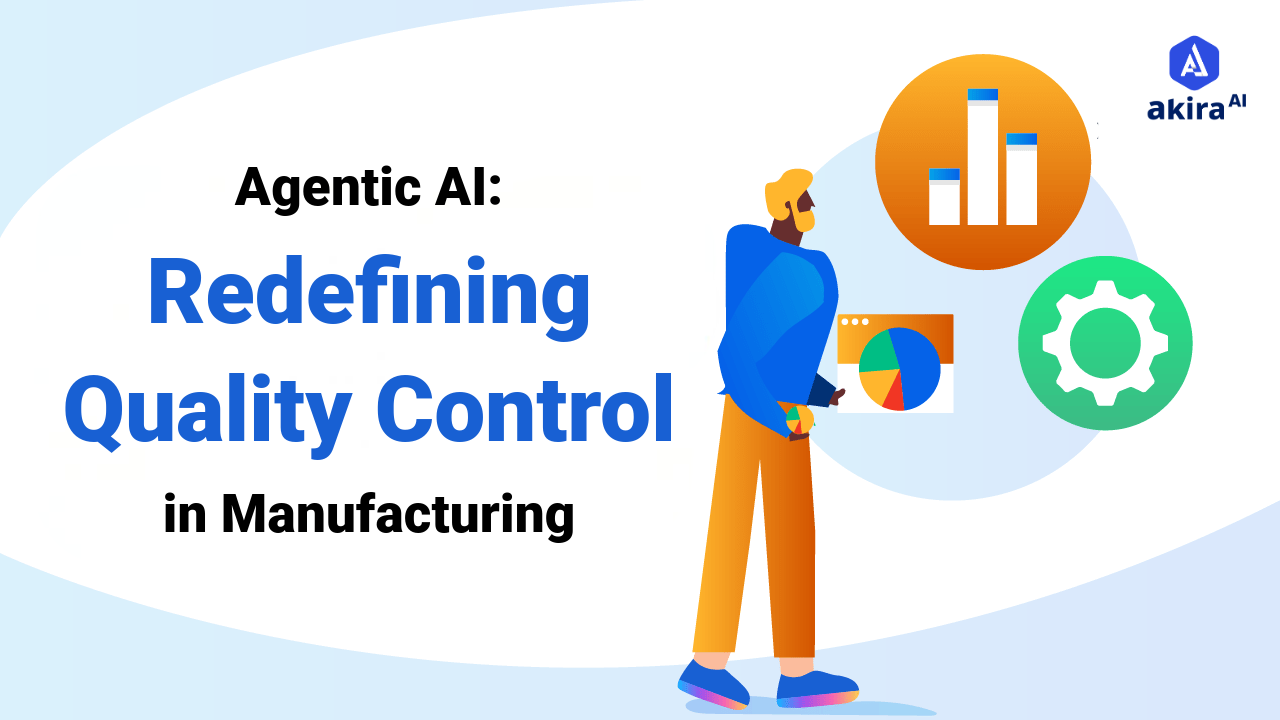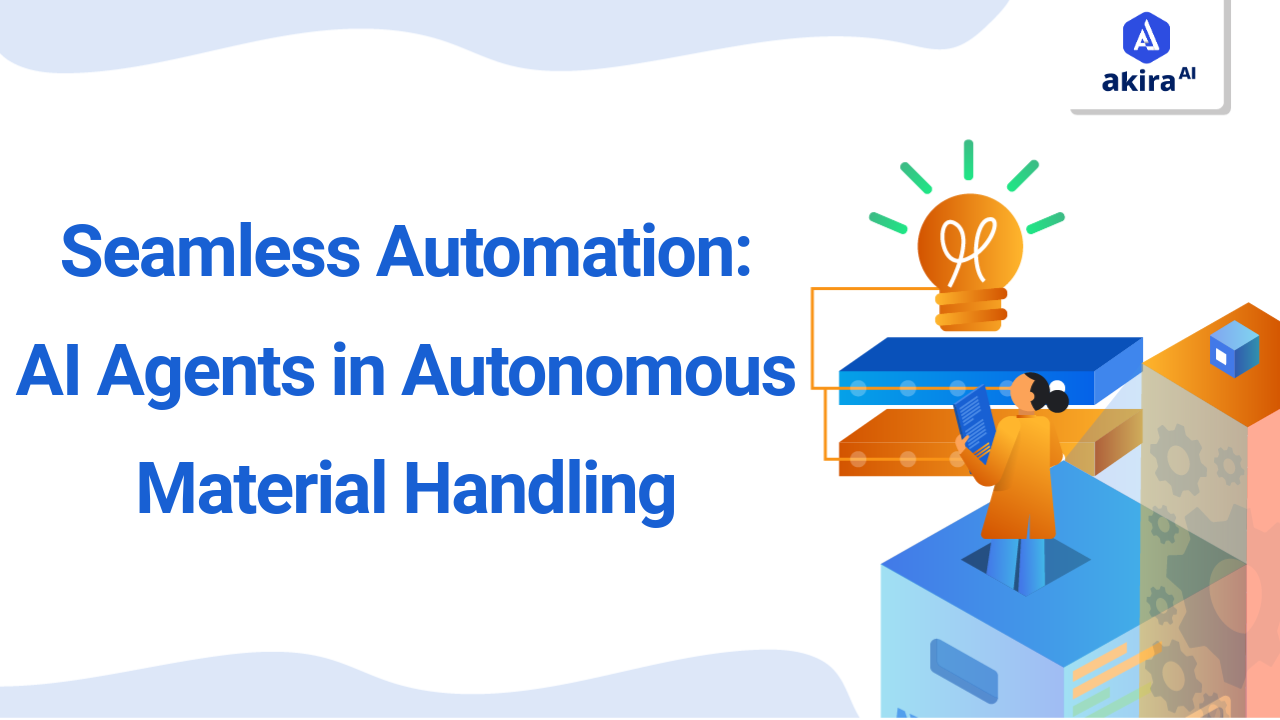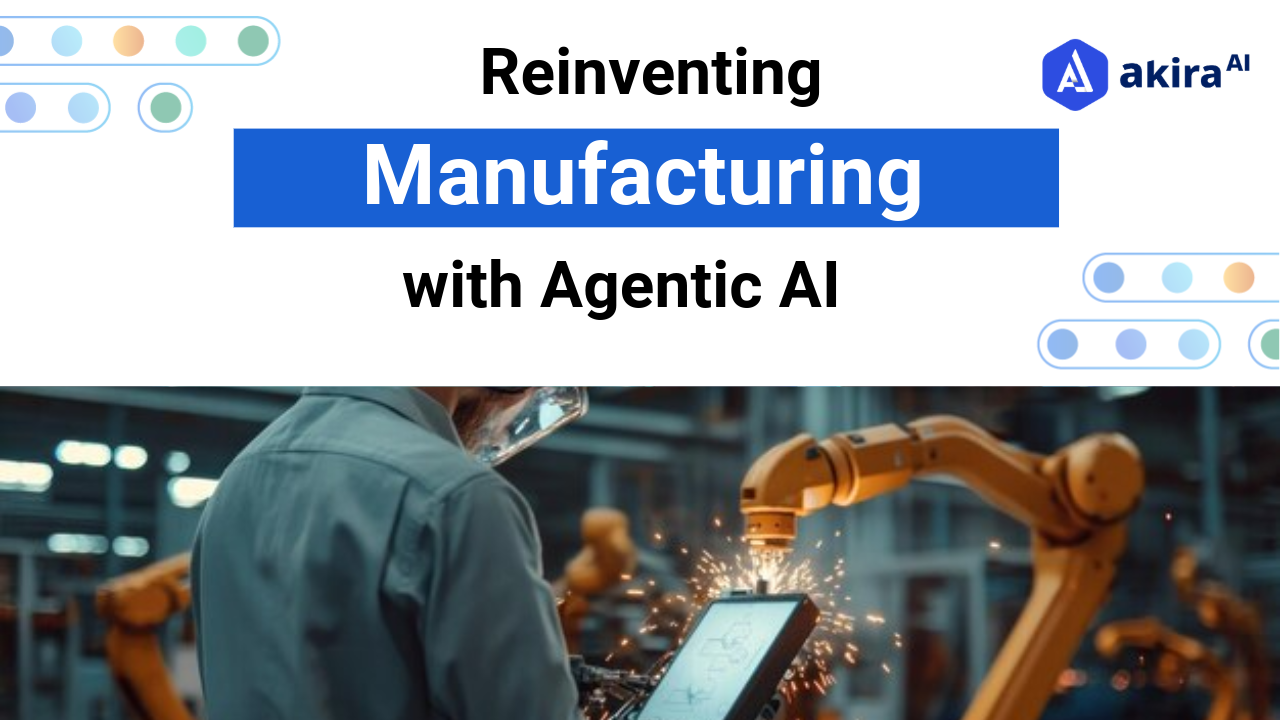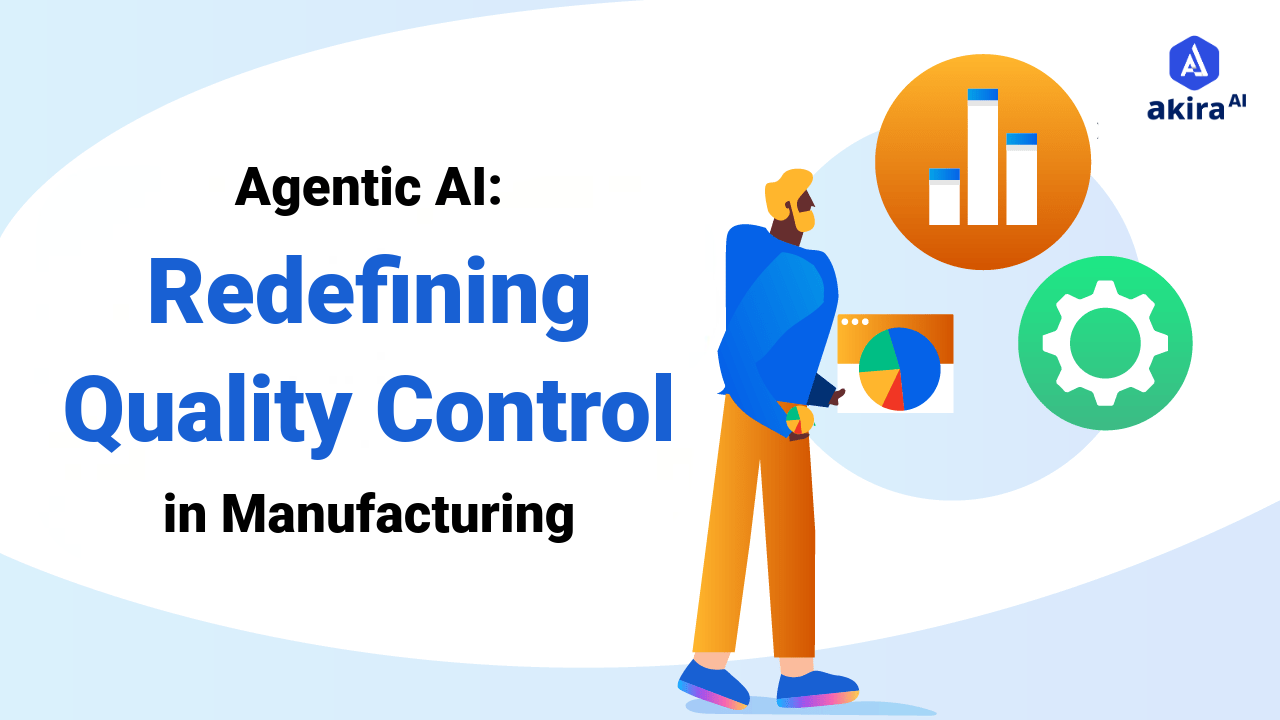Key Insights
AI agents are revolutionizing quality control and defect detection in manufacturing by leveraging real-time data analytics. These systems identify potential issues early, enhancing operational efficiency and reducing costs. By improving product quality and customer satisfaction, they help manufacturers stay competitive in a rapidly evolving landscape. This explores how AI Agents are transforming manufacturing quality assurance.

Precision and high quality are the cornerstones of the manufacturing process but achieving them can sometimes feel like an uphill battle. But AI Agents are here to save the day! These smart technologies are revolutionizing how manufacturers handle quality control and defect detection. With real-time data, they are able to identify problems before complications arise, assisting business organizations in delivering only the best. Whether it be cost–function reduction or an increase in productivity – the effects of these agents are unquestionable. In this blog, we will discuss how these AI systems are helpful in making the lives of manufacturers easier.
What is Quality Control and Defect Detection?
Quality control in manufacturing refers to the systematic processes that ensure products are made to specifications and meet quality standards. This encompasses a range of practices aimed at identifying defects before products reach the market. Defect detection plays a crucial role, involving various techniques and technologies to find inconsistencies, errors, or imperfections in products during production. By integrating robust quality control measures, manufacturers can reduce waste, lower costs, and enhance customer satisfaction.
A Brief Overview of Quality Control and Defect Detection in Manufacturing
Quality control and defect detection are fundamental components of effective manufacturing practices, focusing on maintaining high standards throughout production. Unlike traditional methods that rely on periodic inspections, modern approaches prioritize continuous monitoring to ensure consistent product quality. It is crucial to identify defects before products reach the market, protecting brand reputation and consumer trust.
AI agents are changing manufacturing quality assurance and defect identification by offering sophisticated capabilities that conventional methods cannot match. These smart-systems process extensive datasets in real time, pinpointing potential flaws with exceptional precision. They can consistently adjust to emerging patterns and trends, refining their detection algorithms.
Traditional vs. Agentic AI-Based Quality Control and Defect Detection
|
Aspect |
Traditional Quality Control |
Agentic AI-Based Quality Control |
|
Approach |
Periodic inspections and manual checks |
Continuous monitoring using real-time data analysis |
|
Speed of Detection |
Slow, often reactive |
Fast, proactive, and predictive detection |
|
Adaptability |
Rigid, often fails to adapt to new issues |
Self-learning, adaptive to new patterns and trends |
|
Maintenance Costs |
Higher due to unplanned downtimes |
Reduced through predictive maintenance |
|
Human Intervention |
High, prone to human error |
Minimal, automated processes reduce reliance on human input |
|
Accuracy |
Often subject to human error |
Highly accurate through data-driven insights |
Akira AI Multi-Agent in Action
Akira AI employs a number of agents to achieve additional improvements in the aspects of quality control, which shows the applications of AI in the sphere of manufacturing. The following is a process flow illustrating how various agents are integrated within Akira AI's multi-agent framework:
-
Data Collection Agent
This agent collects information at runtime where the manufacturing equipment and production line are situated. It provides the coverage of data that is crucial for carrying out quality analysis. Supported data consists of operational parameters of the machines, characteristics of the working environment, and manufactured products.
-
Quality Analysis Agent
The agent takes the received information to identify defects or abnormalities. It assesses your performance against compliance standards using algorithms to analyze quality. This can be done in order to quickly identify the disturbances so that corrective actions can be swiftly taken.
-
Feedback Agent
This autonomous agent provides operators with real-time insights into product quality. When there are defects, it sends notifications for the required rectification to be made. This provides an invaluable feedback loop that can be used to fine-tune and ensure the quality of the products on the field.
-
Reporting Agent
The reporting agent compiles data and analyses into comprehensive reports for quality audits. These reports serve as compliance documentation and operational assessments. They make it easy for the management to make important decisions based on the quality of the products being produced.
Use Cases and Application of Quality Control and Defect Detection
-
Driving Precision in the Automotive Industry: In automotive manufacturing, AI agents monitor assembly lines to detect defects in real-time. This enhances safety by ensuring critical processes like welding and painting meet stringent regulations.
-
Elevating Standards in Electronics Manufacturing: AI-powered defect detection involves the automated identification of defects at a micro level in circuit boards. It has a great ability to minimize failure risks which enhances product quality and amplifies the rate of production processes.
-
Safeguarding Consumer Health in Food Production: Automated visual inspections in the food production line for foreign bodies and flaws in the packaging. This makes it possible for only safe and properly packed products to be near the consumers, thus improving the general quality.
-
Ensuring Compliance and Integrity in Pharmaceuticals: AI systems in pharmaceuticals check product authenticity and reduce the amount of contamination. They help to achieve secure packaging besides monitoring the quality parameters and helping in meeting other critical legal requirements.
-
Enhancing Safety in Aerospace Manufacturing: In aerospace, autonomous agents examine components for faults that might affect the safety of products. It helps maintain high indicators of safety, increasing absolute dependability.
Operational Benefits of AI Agents for Quality Control and Defect Detection
-
Significant Cost Savings: These agents significantly cut expenses linked to defects and related rectification. Since companies are able to identify defects at an earlier stage of the production process, there is an up to 20% saving on costs associated with rework.
-
Boosting Productivity: With these agents projected to handle 80% of quality control tasks by 2025, human resources can focus on higher-value strategic initiatives. It is expected to increase overall productivity by 30%, translating into significant financial gains.
-
Enhanced Operational Efficiency: The application of agentic AI results in a 25% increase in operational efficiency when combined with other organizational units. These make it easy to monitor the process of defect detection and quality control so that cycle time is decreased.
-
Data-Driven Decision Making: In real-time, the use of artificial intelligence in data analysis makes it easy to solve complex problems, hence improving decision-making processes. It aids manufacturers to improve efficiency and can bring about downsizing costs by as much as 10-15 percent.
-
Improved Customer Satisfaction and Brand Loyalty: Consistently producing high-quality products enhances customer satisfaction and loyalty. It can lead to a 15-20% increase in repeat business, which is crucial for long-term profitability.
Technologies Transforming in Quality Control and Defect Detection
Several key technologies are integral to the success of AI-driven quality control systems, revolutionizing how manufacturers approach defect detection and quality assurance.
-
Machine Learning: All the present technological developments, and quality control benefits most from machine learning. Using algorithms that analyze previous data, manufacturers can create models to forecast the occurrence of defects.
-
Computer Vision: Imaging technology under computer vision places these agents in a position where they can conduct automated visual examinations of the output, determining the quality of a product. This technology is particularly effective in logging those defects that other methods might not notice.
-
Predictive Analytics: Predictive analytics enhances autonomous agents by forecasting potential quality issues based on historical performance data. By analyzing trends and patterns, manufacturers can anticipate problems before they arise.
-
Internet of Things (IoT): IoT transforms quality control practices by collecting real-time data from manufacturing processes. Its sensors provide AI systems with information for continuous monitoring and analysis.
-
Big Data Analytics: Big data analytics play a vital role in processing the data generated during manufacturing. The AI-based systems utilize advanced analytics to derive actionable insights, helping manufacturers identify areas for improvement.
Future Trends in Transforming Quality Control and Defect Detection
-
Seamless Integration with Existing Processes: There will be a need to design agentic AI systems to harmonize with current processes in the manufacturing sector. They will maximize the value delivery to the manufacturers, improving their operations.
-
Advanced Learning Algorithms: Future autonomous agents will leverage sophisticated learning algorithms that improve their accuracy and adaptability in detecting defects. These advancements will allow manufacturers to achieve higher quality standards.
-
Continued Automation of Quality Control: The trend toward greater automation in quality control processes will accelerate. As manufacturers rely more on agents, human intervention will decrease, resulting in more consistent quality assessments.
-
Real-Time Decision Making: AI agents will empower manufacturers to make decisions based on real-time data analysis. This capability will immediately adjust production processes, continuously optimizing quality control.
-
Emphasis on Sustainability and Resource Efficiency: A growing focus on sustainability will drive the adoption of AI in quality control. Manufacturers will increasingly turn to AI agents to minimize waste and enhance resource utilization.
Conclusion: AI Agents for Quality Control and Defect Detection
To wrap up, embracing AI-driven quality control isn’t just a trend; it’s a smart move for manufacturers looking to thrive. As more companies adopt these AI agents, they’ll be better equipped to tackle challenges and meet customer expectations. The benefits are numerous—think faster defect detection, less rework, and a streamlined workflow. With the manufacturing landscape constantly evolving, investing in AI technology is a step toward ensuring long-term success. Join the revolution and see how these innovative solutions can empower manufacturing processes!


